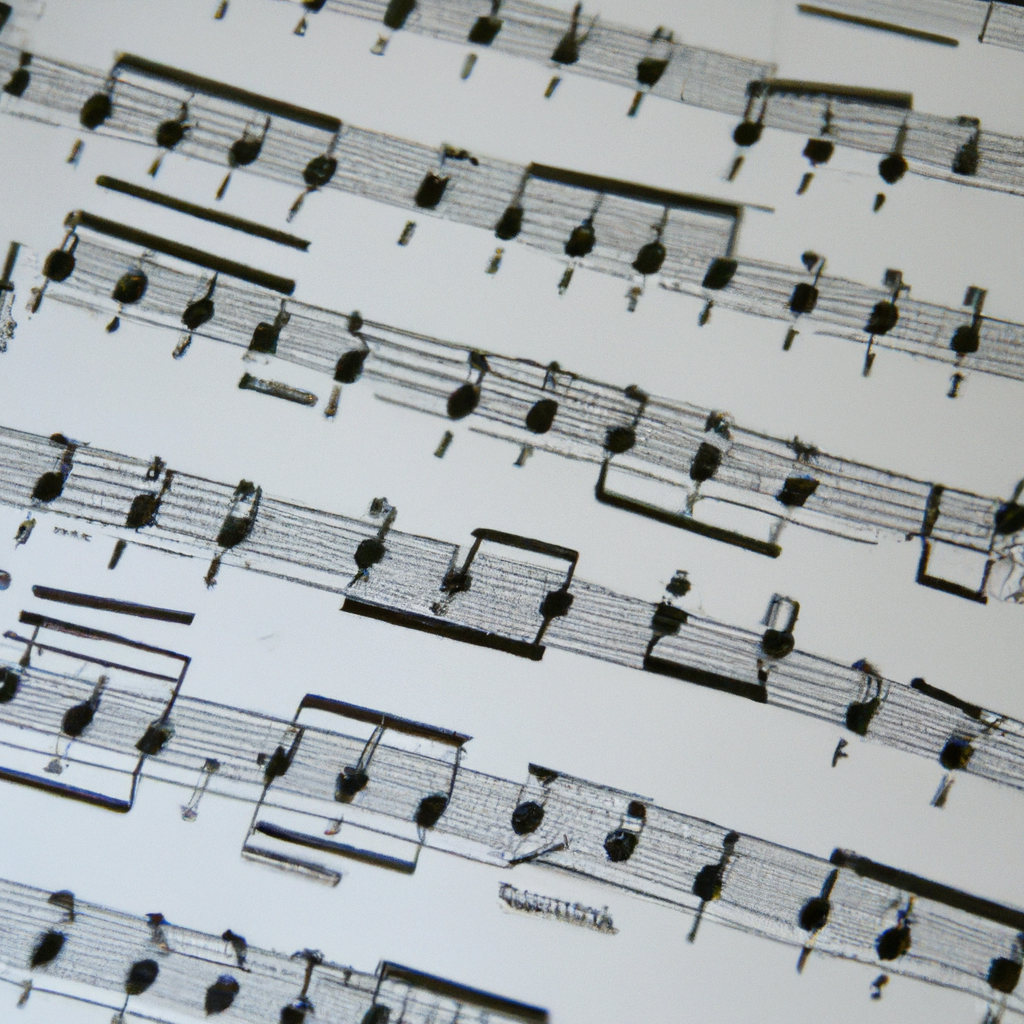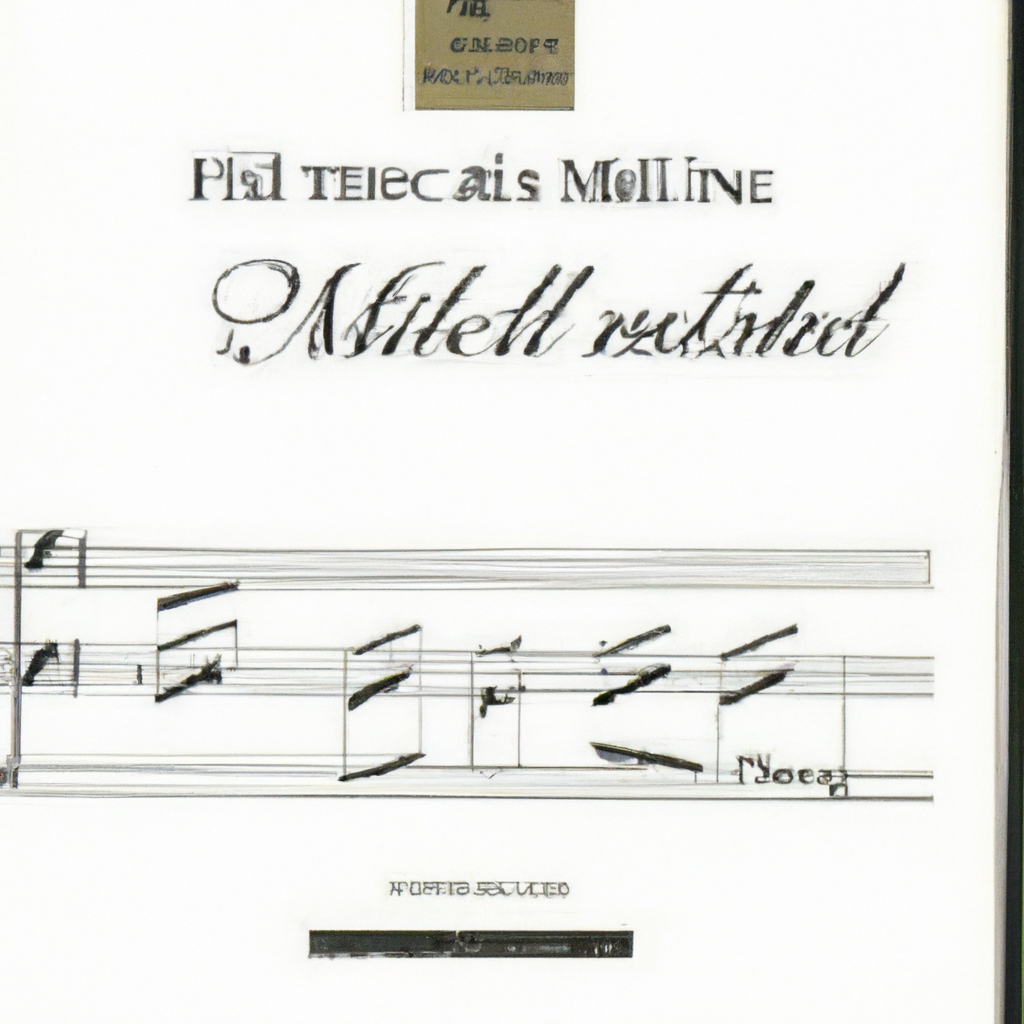
A. Importance of Sheet Music Reading for Beginners

Learning to read sheet music is an essential skill for beginners who aspire to play the violin. Sheet music provides a standardized system of musical notation that allows musicians to communicate and interpret music accurately. By understanding and interpreting the symbols and notations on sheet music, violinists can bring the composer's intended musical expression to life.

B. Overview of the Article
This comprehensive guide will take you through the basics of sheet music reading for beginners on the violin. Starting with an introduction to musical notation, you will learn about the staff, clefs, notes, durations, time signatures, and measures. We will then explore essential music symbols such as noteheads, rests, dynamic markings, articulations, key signatures, and accidentals. Next, we will dive into the crucial aspects of rhythm and tempo, including beats, counting, rhythmic patterns, and tempo markings. Moving on, we will discuss the violin's fingerboard, its strings, positions, and fingerings, and how to utilize open strings for reference. Additionally, we will provide sight-reading tips and strategies for beginners, as well as common mistakes to avoid. Finally, we will recommend resources for further learning and address frequently asked questions about sheet music reading for violin.
A. Introduction to Musical Notation
Musical notation is a system of symbols and marks that represents pitch, rhythm, dynamics, and other musical elements. It allows musicians to communicate and reproduce music accurately.
B. Learning the Staff and Clefs
The staff is a set of horizontal lines and spaces where musical notes are written. Clefs, such as the treble clef and bass clef, indicate the range and position of notes on the staff.
C. Recognizing Notes and their Durations
Notes represent the pitch and duration of a sound. They are placed on the staff and are represented by different symbols, such as circles and ovals, with or without stems.
D. Understanding Time Signatures and Measures
Time signatures indicate the number of beats in a measure and the type of note that receives one beat. Measures are the sections of music separated by vertical lines on the staff.
A. Noteheads and Their Corresponding Pitches
Noteheads are the shapes placed on the staff to represent specific pitches. They can be open or filled, and their position on the staff determines the pitch they represent.
B. Understanding Rests and their Silence Values
Rests indicate periods of silence in music. They have different durations and allow musicians to understand the rhythm and timing of a piece.
C. Exploring Dynamic Markings and Articulations
Dynamic markings indicate the volume and intensity of a musical passage, while articulations indicate how a note or series of notes should be played.
D. Introduction to Key Signatures and Accidentals
Key signatures indicate the key of a piece of music and the arrangement of sharps and flats. Accidentals are symbols used to raise or lower the pitch of a note.
A. Grasping the Concept of Beats and Counting
Beats are the regular pulses that divide music into equal units. Counting helps musicians keep track of the beats and play in sync with the rhythm.
B. Practicing Various Rhythmic Patterns
Rhythmic patterns involve different combinations of note durations and rests. Practicing these patterns helps develop rhythmic accuracy and coordination.
C. Understanding Tempo Markings and Their Interpretation
Tempo markings indicate the speed at which a piece of music should be played. Understanding these markings helps musicians interpret the intended mood and character of a composition.
A. Understanding the Violin's Strings and Positions
The violin has four strings - G, D, A, and E. Different positions on the fingerboard allow violinists to play notes in different octaves.
B. Identifying and Reading Fingerings on Sheet Music
Fingerings indicate which fingers should be placed on which strings and positions to produce specific notes. They help violinists navigate the fingerboard accurately.
C. Utilizing the Violin's Open Strings for Reference
The violin's open strings - G, D, A, and E - can be played without placing any fingers on them. They serve as reference points for intonation and tuning.
A. Developing Visual Scanning Skills
Sight-reading requires the ability to scan and process musical notation efficiently. Developing visual scanning skills helps violinists read ahead and anticipate upcoming notes.
B. Familiarizing Yourself with Common Rhythmic Patterns
Becoming familiar with common rhythmic patterns enables violinists to recognize and execute them more quickly during sight-reading.
C. Practicing Sight-Reading Exercises and Etudes
Sight-reading exercises and etudes specifically designed for beginners help improve reading skills, dexterity, and overall musicality.
D. Utilizing Practice Strategies to Improve Sight-Reading Abilities
Implementing strategies such as gradually increasing difficulty, focusing on specific elements, and regular sight-reading practice sessions can significantly enhance sight-reading abilities.
A. Misinterpreting Rhythmic Notation
Misinterpreting or misunderstanding rhythmic notation can lead to playing incorrect rhythms and disrupting the overall flow of the music.
B. Neglecting to Observe Key Signatures
Not paying attention to key signatures can result in playing incorrect notes, causing dissonance or a lack of musical coherence.
C. Overlooking Dynamic Markings and Articulations
Ignoring dynamic markings and articulations can lead to a lack of musical expression and interpretation.
D. Neglecting to Practice Sight-Reading Regularly
Not practicing sight-reading regularly can hinder progress and limit the ability to read and perform unfamiliar music confidently.
A. Websites and Online Platforms for Sheet Music
There are several websites and online platforms that offer a wide range of sheet music for violinists of all levels. Some popular options include Beginners Sheet Music Reading for Violin, Sheet Music Plus, and IMSLP.
B. Beginner-Friendly Sheet Music Books and Collections
Various sheet music books and collections are specifically designed for beginners. Examples include "Suzuki Violin School," "Essential Elements for Strings," and "Easy Violin Pieces."
C. Violin Technique Books with Sheet Music Examples
Violin technique books often include sheet music examples to practice specific techniques. Books like "Wohlfahrt's 60 Studies for Violin" and "Sevcik's School of Violin Technique" can be helpful resources.
A. What is sheet music reading for violin?
Sheet music reading for violin is the ability to interpret musical notation and translate it into the appropriate fingerings, bowings, and musical expressions on the instrument.
B. Can I learn to read sheet music on my own?
Yes, with dedication and practice, it is possible to learn to read sheet music on your own. However, seeking guidance from a qualified violin teacher can accelerate the learning process and provide valuable feedback.
C. How long does it take to become proficient in sheet music reading?
The time it takes to become proficient in sheet music reading varies depending on individual dedication, practice habits, and previous musical experience. With consistent practice, beginners can start reading simple pieces within a few months.
D. What are some effective practice strategies for beginners?
Effective practice strategies for beginners include breaking down the music into smaller sections, practicing slowly and gradually increasing the tempo, and focusing on challenging passages or techniques.
E. Are there any shortcuts to learning sheet music reading for violin?
Learning sheet music reading for the violin is a gradual process that requires practice and patience. While there may not be shortcuts, consistent and focused practice can lead to significant improvements over time.
F. What are some common challenges faced by beginners when reading sheet music?
Some common challenges faced by beginners when reading sheet music include identifying and memorizing note names, understanding complex rhythms, and coordinating both hands simultaneously.
G. How can I improve my sight-reading skills on the violin?
Improving sight-reading skills on the violin requires regular practice with a variety of music, focusing on rhythm, and developing familiarity with common patterns and intervals.
H. Are there any recommended exercises or etudes for beginners to improve sight-reading abilities?
Yes, there are many exercises and etudes specifically designed to improve sight-reading skills for violinists. Some popular options include the "Sight-Reading for Strings" series by Samuel Applebaum and the "101 Rhythm Instrumental Etudes" by Grover Yaus.
I. Is it necessary to learn sheet music reading if I want to play the violin casually?
While it is not necessary to learn sheet music reading if you want to play the violin casually, it can greatly enhance your ability to play a wide variety of music and express yourself musically.
J. Where can I find free sheet music for beginners?
There are several websites and platforms that offer free sheet music for beginners, such as Beginners Sheet Music Reading for Violin, MuseScore, and 8notes.
A. Recap of Key Points
Learning to read sheet music is crucial for beginners who want to play the violin. Understanding musical notation, essential symbols, rhythm, tempo, and the violin's fingerboard are fundamental skills that contribute to a solid foundation in sheet music reading.
B. Encouragement for Beginners to Continue Learning Sheet Music Reading for Violin
While sheet music reading may seem challenging at first, with consistent practice and dedication, beginners can gradually develop their skills and unlock a world of musical possibilities. Remember to be patient with yourself and enjoy the process of learning and discovering new music on the violin.